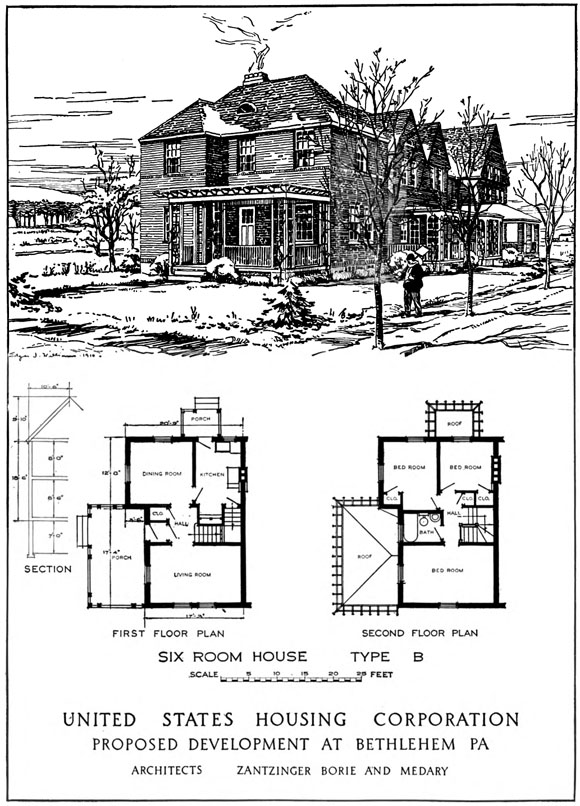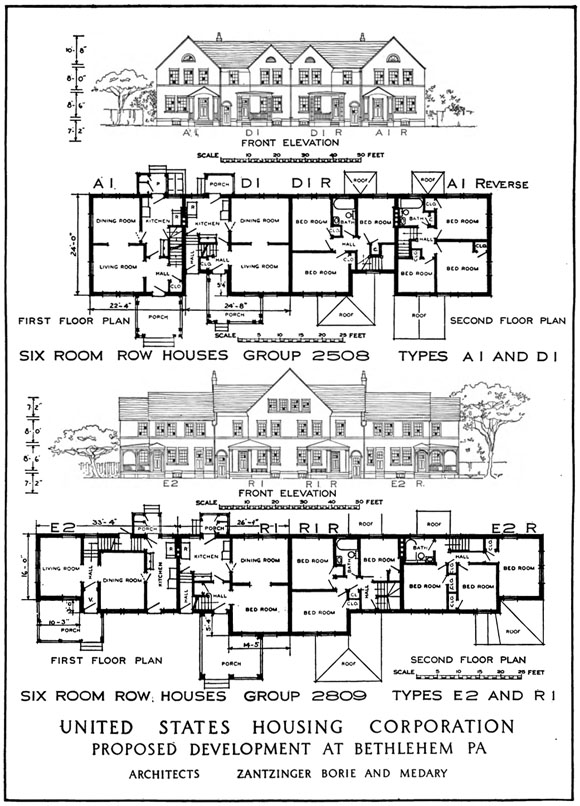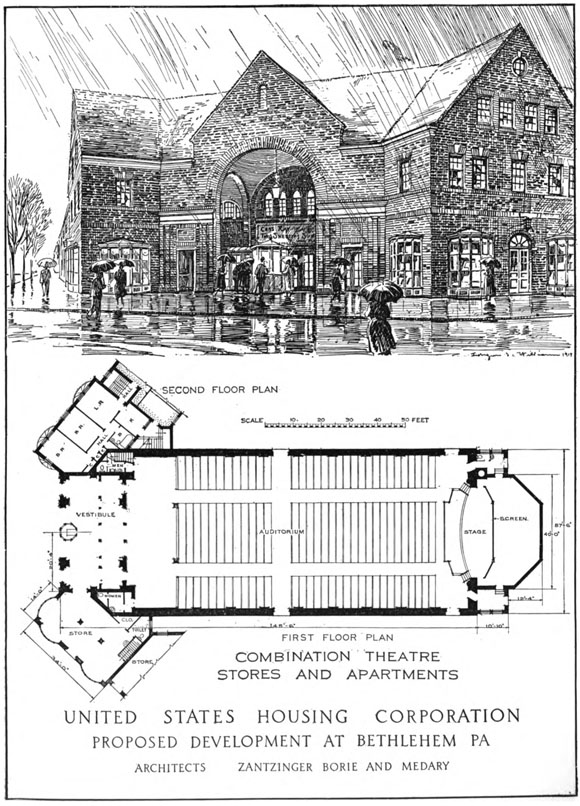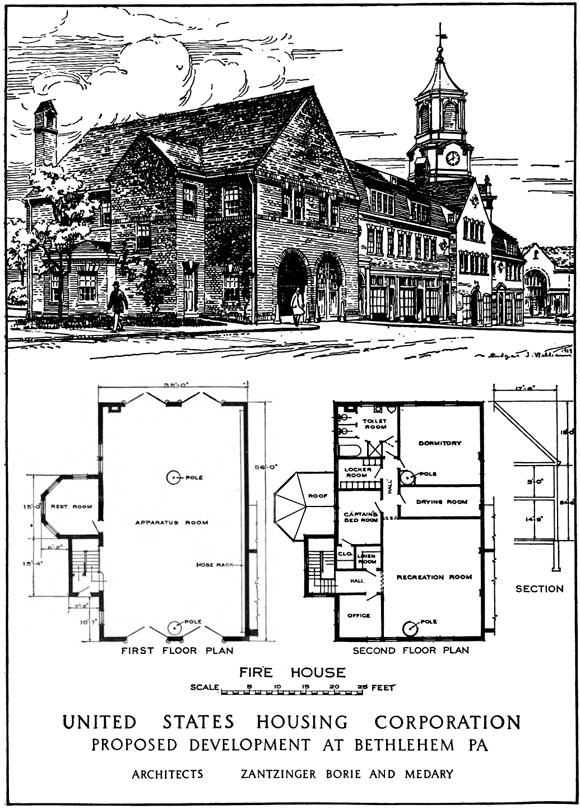Bethlehem, PA
General Description (1919 report):
"Bethlehem, in eastern Pennsylvania, is a compactly built group of five boroughs now being consolidated in a single city with a population of about 70,000, lying on both sides of the Lehigh River. The Bethlehem Steel Co., in the southeastern part of the town south of the river, is the only large industry...The company employed approximately 28,000 men, but with a turnover of 40 percent a month it was necessary to being in about 400 new men every day.
"In April 1918, the Housing Bureau, following various preliminary investigations and a final report on the site, determined that Government aid for housing was essential at Bethlehem and sought for site adequate for possibly 2,000 houses....
"The mountainous character of the country... did not afford any single large housing tract there short of 3 miles away [from the plant].... To the east, however, were 1,000 acres of available land including [a] site already bought by the Bethlehem Steel Co. for housing... The tract donsists of several old farms sloping for the most part gently to the southwest..."
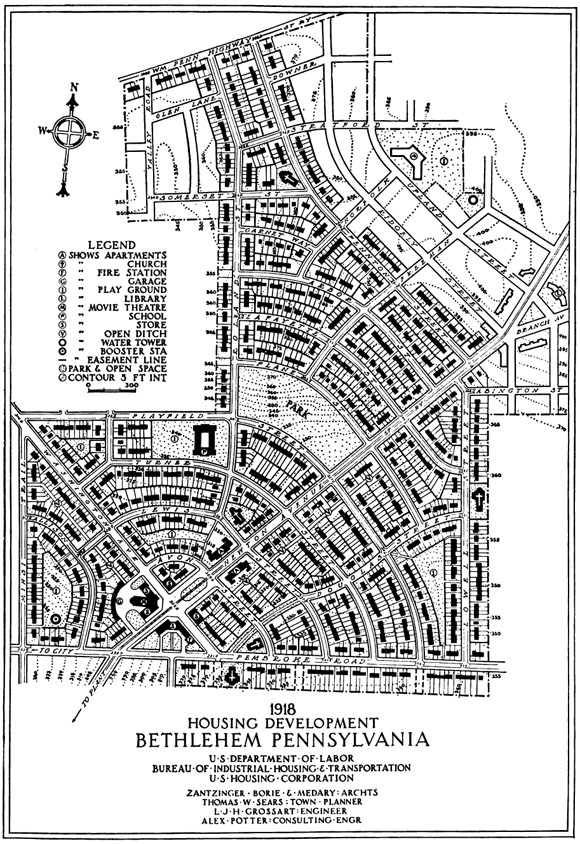
1919 excerpt describing the design of the Bethlehem site:
Area planned: 170.80 acres. Housing planned: Detached houses, 32 families; semidetached houses. 230 families; row houses, 931 families; apartment houses, 65 families; total, 1,258 families.
"The town plan recognized existing street conditions, retaining Newton Avenue widened, and extending Washington Avenue through to Pembroke Road. A reasonably direct secondary route to the north is also provided in Roland Street. Otherwise the streets were designed primarily to give access to the various portions of the tract, and to provide well-shaped building lots. The reasonable arrangement of the streets according to topography and traffic produced a main junction at Washington Avenue and Newton Avenue. Since practically all the foot traffic between the development and the pant went by this palce, we located the stores and the moving-picture theater here, giving importance to the cross-roads open space as a minor civic center..."
The Bethlehem Street View Today
The Bethlehem Site Today
Renderings from 1919
